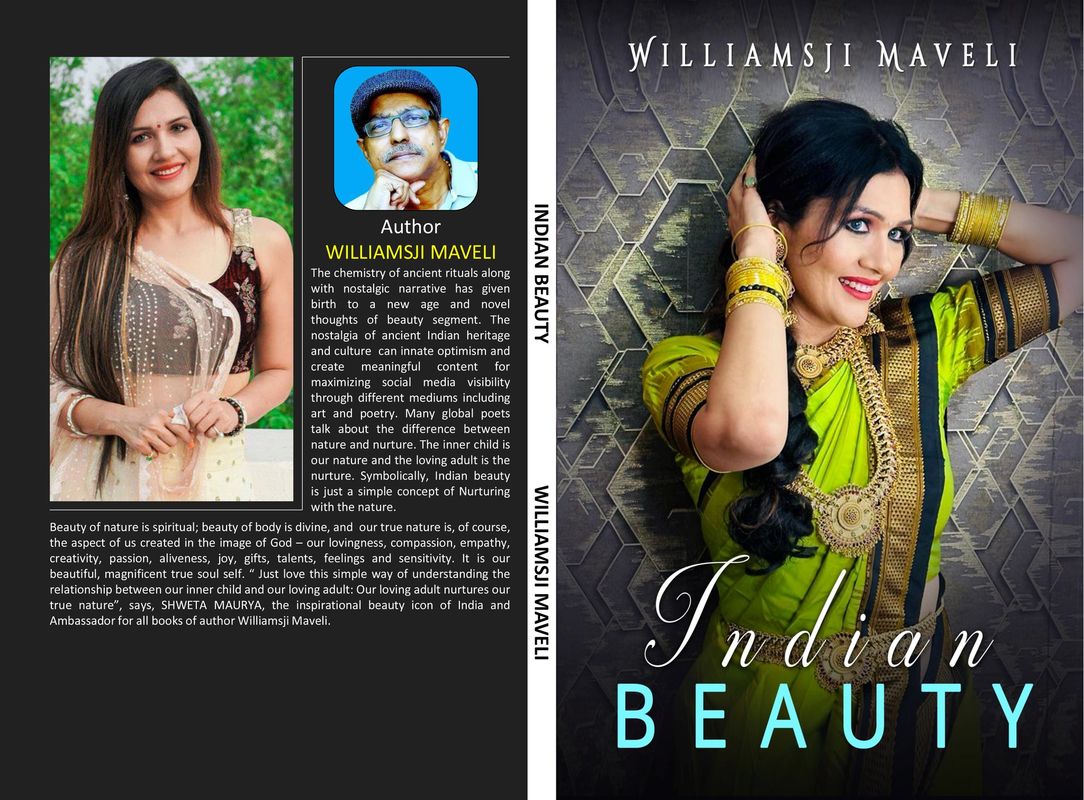INDIAN SAREE BEAUTY

INDIAN SAREE BEAUTY
The saree is an unstitched, rectangular piece of cloth, typically five to nine yards long, that is draped around the body in various styles. It is arguably the most iconic and enduring garment in India, symbolizing femininity, grace, and cultural identity. More than just clothing, traditional Indian sarees are a reflection of India's rich textile heritage, regional diversity, and centuries of craftsmanship.
Historical Significance
The origins of the saree can be traced back to the Indus Valley Civilization (2800-1800 BCE), where evidence suggests women wore draped garments. The word "saree" itself is derived from the Sanskrit word "sati," meaning "strip of cloth." Over millennia, the saree has evolved, influenced by various dynasties, trade routes, and cultural interactions.
During the Vedic period, the "Antariya" (lower garment), "Uttariya" (upper garment), and "Kayabandh" (waistband) formed the basis of draped attire. The Mughal era introduced elaborate embroidery, rich textiles, and Persian influences, leading to more opulent designs. The colonial period saw the introduction of the blouse and petticoat, which became integral to the modern saree ensemble. Throughout India's struggle for independence, the saree became a powerful symbol of national identity and cultural resistance.
Cultural Significance
Sarees hold immense cultural significance in India:
Symbol of Identity: Sarees are deeply intertwined with Indian identity, representing tradition, elegance, and the diverse cultural tapestry of the nation.
Festivals and Rituals: Sarees are an essential part of weddings, religious ceremonies, and festivals across all religions in India. Specific colors often carry symbolic meanings; for instance, red symbolizes love, prosperity, and fertility, making it a popular choice for brides. Yellow signifies joy and celebration, while green represents nature and fertility.
Wearable Art: Many traditional sarees are considered works of art, showcasing intricate weaving techniques, hand embroidery, and motifs that narrate stories of heritage and craftsmanship.
Heirlooms: Sarees are often passed down through generations, becoming treasured family heirlooms that connect women to their ancestry and cultural roots.
Diverse Types of Traditional Indian Sarees
India's vast geographical and cultural diversity is beautifully reflected in the myriad styles of traditional sarees, each distinct in its fabric, weaving technique, motifs, and draping style. Some of the most famous and celebrated traditional sarees include:
Banarasi Saree (Uttar Pradesh): Known for its rich silk fabric and opulent gold or silver brocade (zari) work, often featuring intricate floral and Mughal-inspired motifs. They are a popular choice for weddings and festive occasions.
Kanjeevaram Saree (Tamil Nadu): Also known as Kanchipuram silk, these sarees are renowned for their pure mulberry silk, vibrant colors, and contrasting borders adorned with intricate gold zari work inspired by temple architecture and mythology. They are a staple in South Indian bridal trousseaus.
Paithani Saree (Maharashtra): Celebrated for its luxurious silk, rich colors, and distinctive peacock motifs woven in fine zari. These sarees are handwoven and often worn on special occasions and as part of Maharashtrian bridal ensembles.
Patola Saree (Gujarat): One of the most intricate and expensive handwoven sarees, known for its "double ikat" technique, where both warp and weft threads are dyed before weaving, creating mirror-image patterns on both sides. They often feature traditional motifs like elephants, parrots, and flowers.
Chikankari Saree (Uttar Pradesh): Originating from Lucknow, these sarees are characterized by delicate and intricate hand embroidery (Chikankari) on fine fabrics like cotton, georgette, or chiffon, often featuring floral and paisley patterns.
Bandhani Saree (Gujarat & Rajasthan): Famous for its vibrant colors and unique tie-dye (Bandhani) patterns, created by plucking the cloth with fingernails into many tiny bindings that form a figurative design. These are popular for festive wear.
Sambalpuri Saree (Odisha): Crafted using single ikat techniques, these sarees often feature nature-inspired and tribal motifs like conch shells, wheels, and flowers, typically in traditional red, black, and white palettes.
Muga Silk Saree (Assam): A rare and prized possession, Muga silk is known for its natural golden sheen and exceptional durability, often passed down through generations as heirlooms.
Kasavu Saree (Kerala): Characterized by its refined off-white fabric with gleaming golden borders, symbolizing purity and elegance. It is traditionally worn during festivals like Onam and Vishu.
Chanderi Saree (Madhya Pradesh): Known for its lightweight fabric, sheer texture, and rich motifs, these sarees are made from a blend of silk and cotton, making them comfortable for various occasions.
Mysore Silk Saree (Karnataka): Recognized for its pure silk fabric, rich luster, and minimalistic yet elegant zari borders, offering an understated elegance.
Tant Saree (West Bengal): These lightweight cotton sarees are known for their crisp texture, comfort, and traditional Bengali motifs, making them ideal for everyday wear and local festivities.
In conclusion, traditional Indian sarees are more than just garments; they are a living heritage, a testament to India's artistic prowess, and a timeless expression of feminine grace and cultural pride. Each saree tells a story, embodying the unique traditions, craftsmanship, and aesthetic sensibilities of its region of origin.
WILLIAMSJI MAVELI



